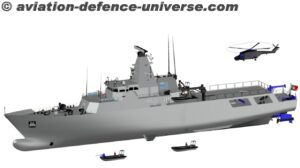
Haifa, Israel.05 October 2020. Elbit Systems of America, LLC, has been awarded an approximately $35 million five-year firm-fixed-priced contract by the U.S. Naval Supply Systems Command (NAVSUP) for repair of line-replaceable units in support of the V-22 aircraft. The repairs will be performed in Fort Worth, Texas and Talladega, Alabama, and the contract will be performed until October 2025.
A line-replaceable unit (LRU), lower line-replaceable unit (LLRU), line-replaceable component (LRC), or line-replaceable item (LRI) is a modular component of an airplane, ship or spacecraft (or any other manufactured device) that is designed to be replaced quickly at an operating location (1st line). The different lines (distances) are essential for logistics planning and operation. An LRU is usually a sealed unit such as a radio or other auxiliary equipment. LRUs are typically assigned logistics control numbers (LCNs) or work unit codes (WUCs) to manage logistics operations.
LRUs can improve maintenance operations, because they can be stocked and replaced quickly from distributed nearby on-site inventories (sometimes mobile storage), restoring the mobile systems to service, while the failed (unserviceable) LRU is undergoing complicated repair and overhaul actions in other support locations (lines). Because of their modularity, LRUs also can contribute reducing system costs and increase quality, by centralizing development across different models of vehicles.
LRU is an essential support item which is removed and replaced at the field level to restore the end item to an operational ready condition. Conversely, a non-LRU is a part, component, or assembly used in the repair of an LRU / LLRU, when the LRU has failed and has been removed from the end item for repair.
LLRU is part of an LRU, and which can be removed and replaced at the field level to restore its LRU to an operational ready condition. As an LRU is considered the ‘parent’, the LLRU is considered a ‘child’. An LLRU can also be a child of a child–that is, an LLRU being a component of a higher-level LLRU. However, there is no hierarchy difference between child levels; the only hierarchical separation is parent versus child.




























































































































